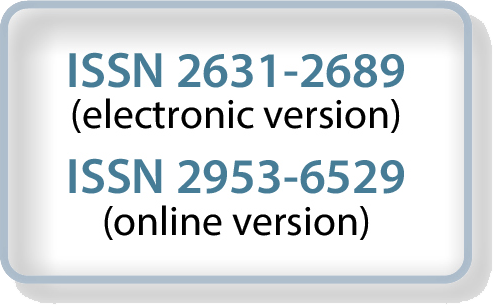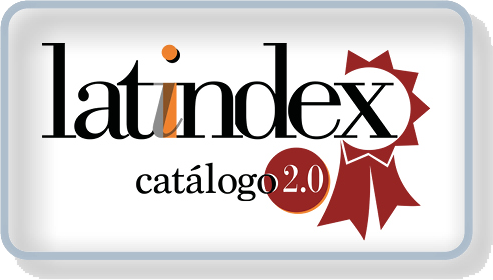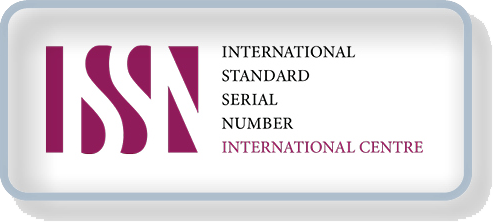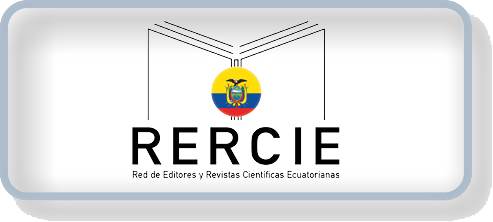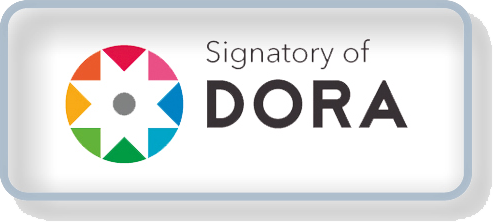Author Guidelines
Welcome to Un Espacio para la Ciencia!
If you are an author interested in submitting your manuscripts for consideration and possible publication in Un Espacio para la Ciencia, we invite you to register and submit your work through our online system. Registration and login are required to submit items online and to check the status of recent submissions.
It is necessary for all authors to register using this link because they must provide their ORCID. If they do not register this way, the ORCID will not be linked to the publication. This registration must be completed by all authors when submitting the article, even though only one, the corresponding author, will upload the document.
If you already have a username and password for Un Espacio para la Ciencia, you can log in and start a new submission by clicking the "Log in" button. If you do not yet have a username and/or password, we invite you to register by clicking the "Register" button.
We will be delighted to receive your contributions in various areas of science and research.
Author Guidelines
Key Points
Manuscripts will be received through the OJS (Open Journal Systems) platform, where they will undergo processing. It is essential that the author uploads the document following these criteria:
- The submitted document must be in Microsoft Word format and must be anonymized.
- Metadata for all contributors involved in the article must be registered, including their full names, academic or professional affiliations, email addresses, and ORCID codes.
- At the time of submission, the authorship, originality, and cover page documents must be attached, which can be downloaded from this link.
- DOIs for all cited works must be included. If a work does not have a DOI, a direct and operational URL to the document must be provided.
Errata and Retractions: Editors allow the publication of errata when errors are identified in published articles. They are also responsible for retracting articles when necessary, ensuring the integrity and accuracy of the journal.
Author and Contributor Contribution Statement: Authorship must include a statement at the end of the articles specifying the contribution of each author and collaborator, using the CRediT taxonomy. Authors are required to actively participate in the discussion of the results and review and approve the final version of the work. Authors must submit the document titled Authorship and Publication Commitment Statement, duly completed, at the time of submitting their manuscripts.
Use of Artificial Intelligence (AI) tools: Un Espacio para la Ciencia allows the responsible use of generative artificial intelligence tools (such as ChatGPT, Bard, or others) exclusively for auxiliary tasks such as language enhancement, structuring, or translation. Authors must explicitly declare in the manuscript if any of these tools were used, specifying the type of AI tool and its purpose. Authorship must remain entirely human. For more information, please refer to our Policy on the Use of AI.
We thank the authors for adhering to these guidelines, which will facilitate an efficient evaluation and publication process in Un Espacio para la Ciencia.
Formatting Rules
- Paper dimensions: A4 (21.0 x 29.7 cm); margins of 2.50 cm on all edges of the page.
- Font: Times New Roman, size 12 pt; justified alignment, 1.5 cm line spacing. Use italics instead of underlining (except for URLs).
- Page numbering starts from the first page and is placed in the bottom right corner.
- Adhere to spelling rules, including the use of accents and umlauts, even in uppercase letters.
- When mentioning organizations, use the name in its original language followed by its acronym in parentheses. If necessary, add the translation into Spanish.
- Bibliographic citations: follow APA format, seventh edition.
- Footnotes are not accepted. Clarifications should be integrated into the body of the text.
- Refer to photographs, graphics, diagrams, illustrations, maps, and similar elements as Figures.
- All tables, figures, and appendices must be mentioned in the text before their inclusion.
- If there are appendices, they should be placed at the end of the document, after the bibliographic references.
- Images should have a resolution of 300 dpi, and titles and sources should be legible and concise.
- References: They should be from the last five years and sourced from recognized databases such as ScienceDirect, SpringerLink, or similar. At least 60% of the references used in the submitted works must come from these sources. However, references to classic authors or relevant works that significantly contribute to the manuscript are accepted, even if they fall outside of this time frame.
Important: Tables and Figures should be prepared according to the guidelines of APA seventh edition.
The documents for: Originality, Authorship, Cover, as well as the templates for proposal submission can be downloaded at the LINK
Manuscript Sections
Title and Author Information
The manuscript for Un Espacio para la Ciencia should begin with a title in Spanish and English, written in lowercase and centered. The title should not exceed 18 words and accurately reflect the content of the text. Next, author information should be presented, centered. This should include full names, academic degrees, institutional affiliation with postal address, city, and country, email address, and ORCID.
Abstract
The manuscript should continue with an abstract written in Spanish, not exceeding 250 words and in a single paragraph, using Times New Roman font, size 12 points, with 1.5 line spacing. This abstract should be structured with an Introduction (problem statement), methodology, results, and the most relevant conclusions. Following this is the abstract, which is the translation of the abstract into English, using the same formatting specifications.
Keywords
Keywords should be presented in both Spanish and English to identify the work. They must be written in lowercase, separated by commas, and include a minimum of 4 and a maximum of 6 terms or descriptors, preferably selected from the UNESCO Thesaurus. Unrecognized terms will not be accepted; if a specific word cannot be found in the thesaurus, the closest term that accurately reflects the content of the work should be used.
Body of the Manuscript
Introduction
The body of the article should start with an introduction that addresses the core of the study, including the contextualization of the problem, the review and analysis of recent literature related to the topic, the establishment of the general and specific research objectives, and the presentation of hypotheses if applicable.
Methodology
This section should detail how the problem was approached, including the research design, the sample used, the materials, methods, and techniques employed. It is recommended to structure this section chronologically, reflecting the sequence of the study.
Results
Here, the findings of the research are presented. The data should be presented in a logical sequence and may be accompanied by tables and figures if necessary. It is recommended to use a single form of presentation (tables or figures) for a specific set of data.
Discussion
In the discussion section, the results obtained in the research are critically analyzed. The findings should be interpreted, contextualized with previous research, and their implications discussed. Similarities and differences with other studies should also be mentioned, and possible directions for future research suggested.
Conclusions
This section synthesizes the main conclusions that can be inferred from the results. They should address the research question posed in the introduction and propose possible directions for future research.
References
Finally, references should be ordered alphabetically by author and follow the APA 7th edition guidelines. It is recommended, but not mandatory, to use reference management tools such as Zotero or Mendeley to facilitate the organization and formatting of references.
Authors are advised to download and follow the Manuscript Submission Guide for Un Espacio para la Ciencia. The Proposal Template for presentation can also be downloaded.
It is important for authors to strictly follow these guidelines to ensure the proper presentation and organization of their manuscripts.
Types of Contributions in Un Espacio para la Ciencia
In Un Espacio para la Ciencia, authors have the opportunity to submit a variety of works, as long as they are unpublished, not currently under consideration for publication elsewhere, and original. In addition to indexed papers, the following types of contributions are also accepted:
1. Original Scientific Research
- Description: These papers should detail and provide evidence for unpublished results from complete research projects. They must include sections on introduction, methodology, results, discussion, and conclusions.
- Length: The length should range from 6,000 to 10,000 words, equivalent to approximately 20-25 pages in A4 format.
- Number of Authors: Up to 4 authors.
- References: Must include a minimum of 30 bibliographic references.
2. Critical Analysis Articles
- Description: These documents present meta-investigations, focusing on theoretical elaborations, critical interpretations, and conceptualizations related to epistemological or methodological issues.
- Length: It is recommended that the length does not exceed 7,000 words, equivalent to approximately 17-22 pages in A4 format.
- Number of Authors: Up to 4 authors.
- References: It is suggested to include a minimum of 20 bibliographic references.
3. Literature Reviews
- Description: These articles provide an in-depth analysis of existing literature on a specific topic, reflecting advances and trends in a field of knowledge.
- Length: It is suggested that the length does not exceed 10,000 words, equivalent to approximately 20-25 pages in A4 format.
- Number of Authors: Up to 3 authors.
- References: It is recommended to include a minimum of 50 bibliographic references.
4. Case Studies
- Description: In this format, authors present a detailed analysis of a particular case, providing information on technical and methodological experiences and materials collected while studying an individual, organization, or specific situation. It should also include an analysis of the literature related to similar cases.
- Length: It is suggested to have a length of up to 4,000 words, equivalent to approximately 10-13 pages in A4 format.
- Number of Authors: Up to 3 authors.
- References: It is recommended to include a minimum of 20 bibliographic references.
5. Theoretical Articles
- Description: Theoretical articles meticulously analyze the structure of a theory or its concepts, with the purpose of enriching, expanding, and deepening the theoretical foundations of an area of study.
- Length: It is recommended not to exceed 4,000 words, equivalent to approximately 10-13 pages in A4 format.
- Number of Authors: Up to 2 authors.
- References: Since theoretical articles are based on the analysis of theories, it is important to include references that support and contextualize the discussion. It is recommended to include at least 30 relevant bibliographic references.
5. Systematization of Professional Experiences
- Description: Articles on the systematization of professional experiences aim to build and make explicit the knowledge and learnings acquired through a rigorous analysis and evaluation of the actions carried out.
- Length: Up to 4,000 words, equivalent to approximately 10-13 pages in A4 format.
- Number of Authors: Up to 3 authors.
- References: In the systematization of professional experiences, it is relevant to reference theoretical frameworks, previous studies, or sources that contextualize and support the experience. It is recommended to include at least 20 pertinent bibliographic references.
It is important to note that the quality and relevance of bibliographic references are essential to strengthen the academic soundness of the articles.
Additionally, the following are accepted:
- Book Reviews: Should include title, author and publisher information, critical analysis, evaluation of the work, and final comments. Recommended length of 1,500 to 2,500 words (4-6 pages in A4 format).
- Letters to the Editor: Space for comments, corrections, or responses to published articles. Recommended length of 500 to 1,000 words (1-2 pages in A4 format).
It should be mentioned that the Editorial Board of Un Espacio para la Ciencia makes the final decisions on the publication of works, based on the majority opinion. It is necessary that authors comply with the guidelines, and in case of disagreement with the editorial decision, it is recommended to present reasoned and supported arguments.
Number of Authors for Contributions in Un Espacio para la Ciencia
It is important to consider the appropriate number of authors to ensure a coherent and high-quality academic approach. The maximum number of authors allowed for each type of manuscript is specified below:
1. Original Scientific Research
- Number of Authors: Up to 4 authors.
- Justification: Given the comprehensive nature of these works and the need to provide a variety of knowledge and skills, a larger number of authors can be beneficial.
2. Critical Analysis Articles
- Number of Authors: Up to 4 authors.
- Justification: Critical analysis articles tend to be more reflective and conceptual, and a smaller team is sufficient to address the epistemological and methodological aspects.
3. Literature Reviews
- Number of Authors: Up to 3 authors.
- Justification: Conducting literature reviews requires rigorous work in selecting and analyzing texts, and a team with a variety of expertise can enrich the critical evaluation.
4. Case Studies
- Number of Authors: Up to 3 authors.
- Justification: Since these studies focus on a specific case, coherence and a detailed approach are crucial, which is easier to maintain with a smaller team.
5. Theoretical Articles
- Number of Authors: Up to 2 authors.
- Justification: Theoretical articles are often the result of a deep and thoughtful analysis of a theory or concepts, which can be carried out more effectively by one or two specialists in the field.
6. Systematization of Professional Experiences
- Number of Authors: Up to 3 authors.
- Justification: These articles involve an analysis of professional experiences, and a reduced number of authors allows for a more authentic and focused representation of acquired experiences and knowledge.
7. Book Reviews
- Number of Authors: 1 author.
- Justification: Book reviews are personal and critical analyses of a work, and therefore, should reflect the individual perspective of the reviewer.
8. Letters to the Editor
- Number of Authors: 1 author.
- Justification: Letters to the editor are usually personal responses or comments on published articles and should represent the opinion of the individual writing.
It is important to note that authors must adhere to ethical and academic authorship standards, ensuring that all contributions are properly acknowledged and free from any form of honorary or ghost authorship. Additionally, it is worth highlighting that book reviews and letters to the editor in Un Espacio para la Ciencia are not subjected to a peer review process. These contributions serve as personal analyses and comments on published works, aiming to facilitate idea exchange and foster academic dialogue. Nevertheless, all contributions, including book reviews and letters to the editor, must align with the ethical and quality standards established by the journal.
Manuscript Submission Instructions
Preparing Your Manuscript
- Formatting and Structure: Ensure that your manuscript complies with the journal's formatting and structural guidelines. This includes citation style, figure formatting, header structure, and more. Please refer to our author guidelines for detailed instructions.
- Anonymization: Before submitting your manuscript, make sure it is properly anonymized to comply with our double-blind peer review process. Please follow the instructions for anonymizing documents provided in this section.
Registration on the OJS Platform
- Create an Account: If you don't have an account in our OJS system yet, visit the journal's webpage and select "Register." Fill out the registration form with your information and create an account.
- Login: If you already have an account, simply log in to the "Un Espacio para la Ciencia" OJS platform.
Manuscript Submission
-
Start a New Submission: Once you are logged in, go to the "Submissions" section and select "Start a New Submission."
-
Select Section: Choose the section of the journal to which you wish to submit your manuscript (e.g., Administrative, Financial, or Economic Sciences).
-
Upload Manuscript: In the "Upload Submission" tab, click on "Choose File" and upload the anonymized document of your manuscript.
-
Metadata: In the "Enter Metadata" tab, provide information about your manuscript, including the title, abstract, keywords, and references. Note that this section should not contain any information that reveals your identity or that of the co-authors.
-
Upload Additional Files: In this section, you must upload the originality, authorship, and cover page documents, which can be downloaded from this link. If you have any other additional files, you may also attach them at this time.
-
Confirmation: Finally, review all the uploaded data and documents, and if everything is in order, click "Finish Submission."
-
Tracking Submission: Once you have submitted your manuscript, you will be able to track its status through your OJS account.







